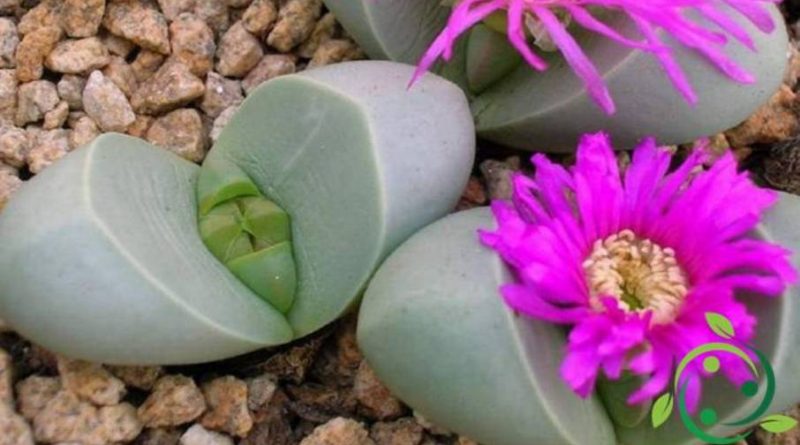How to cultivate Argyroderma
How to cultivate Argyroderma
The Argyroderma (Argyroderma N.E.Br., 1922) are a genus of succulent plants of the Aizoaceae family, originating in South Africa.
This genus is represented by plants, 2-3 centimeters high, without stem, formed by two paired, fleshy and divaricate leaves of light green color.
The leaves are characterized by a deep central incision, during the period of vegetative growth, which produce numerous basal shoots that expand giving rise to many small groups of plants similar to stones. In fact the Argyroderma, like the Lithops, are called living stones or living stones.
One of the most known and cultivated species is the Argyroderma pearsonii.
In this card we will see how to cultivate Argyroderma by following the most useful precautions.
In general the Argyroderma in particular need a very porous and draining soil, composed of fertilized earth, sand and very coarse gravel.
The position must be full sun, with regular watering but only when the earth is dry, while it will be completely suspended during the winter when it will have to be kept at a temperature not lower than 4 ° C.
The reproduction of these plants takes place by seed, spreading the seeds in a bed of damp sand without burying them and maintaining constant aeration in order to avoid rotting; they will then be stored at a temperature of about 21 ° C.
These plants bloom in the spring or autumn period; from the central fissure of the leaves sprout small flowers similar to those of the Carpobrotus edulis, with many linear petals, of purple or yellow color typical of Aizoaceae.
In the period between winter and spring two new leaves appear. In summer, however, the old ones wither and then dry completely.
Let’s see in detail the cultivation technique.
The Argyroderma, as mentioned, prefer the sunny places but can flow very well in the semi-shaded ones; they are plants that do not fear the cold very much, and tolerate low temperatures quite well. However, avoid placing the plants in poorly sunny places for many hours a day.
The soil where they are grown must be a mixture of sand, gravel, peat and well-drained soil.
For watering it is necessary to remember that, being succulent plants, they should be watered sporadically from October to May; in summer, however, provide a little water only if the leaves appear wilted; in winter they should never be watered.
To fertilize, remember that, like other succulent plants, they do not need large inputs; however, at least once during the period of vegetative growth, it is advisable to distribute well-humified organic substance (excellent the earthworm humus) and in any case not rich in nitrogen but well endowed with potassium.
Now let’s see the multiplication.
The Argyroderma multiply by seed and by division of the tufts or of the side shoots.
The operation must be carried out in spring or autumn every 2 – 3 years, when the plant has no more space available if grown in pots. The new vase must be a few cm wider than the previous one and preferably plastic. When carrying out repotting it is advisable to keep the leaves raised a few centimeters from the ground and cover the free surface with medium-sized gravel.
Like all succulents, these plants fear radical rot caused by water stagnation.
Another disturbing factor can be attacks by scale insects that almost always nest among the leaf incisions and whose presence is detectable by the formation of white wax clusters.
The attacks of scale insects are greater when mistakenly supplying nitric nitrogen fertilizers which therefore, also due to the physiological needs of these plants, should always be avoided.
For a better aesthetic appearance of these plants then, and to guarantee better vegetative growth, it is advisable to periodically remove the withered and dry leaves.

